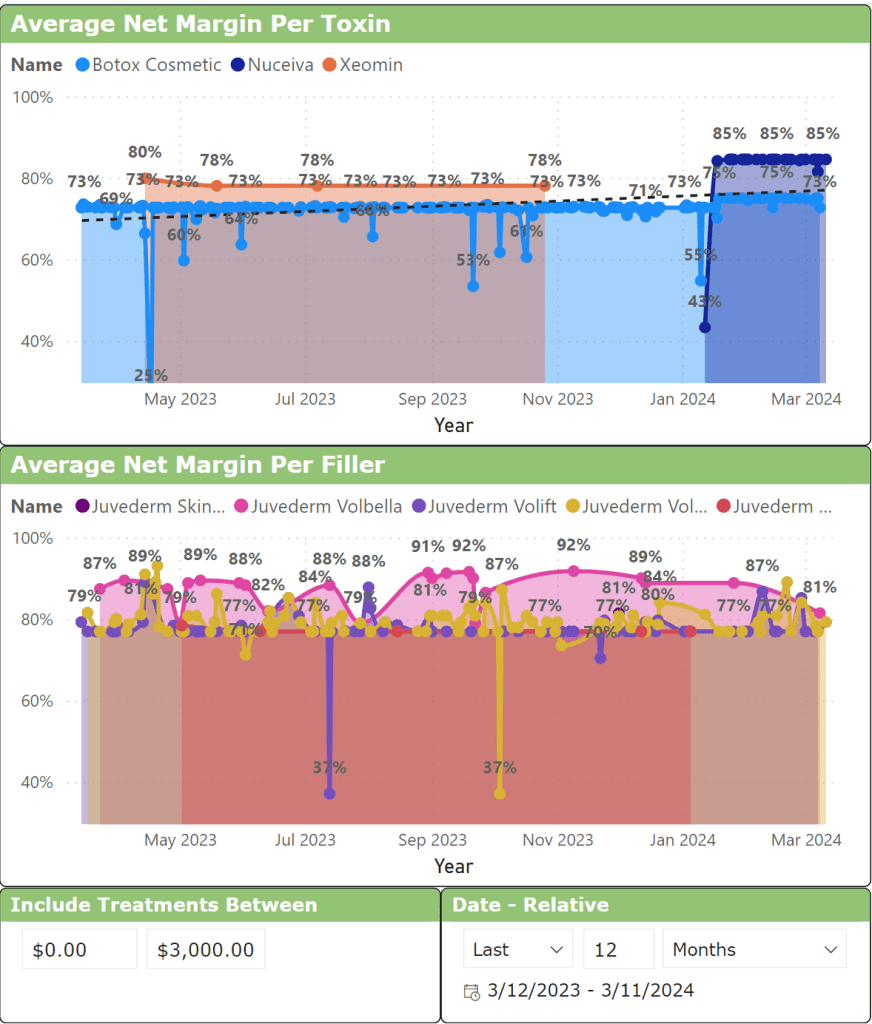The selection of the appropriate toxin for use in aesthetic clinics is a critical decision that has far-reaching implications for the clinic’s financial health and client satisfaction. Central to this decision-making process are two pivotal factors: gross margin and the number of units used. This essay delves into why these two factors are crucial for aesthetic clinics in choosing which toxin to utilize, highlighting their significance in operational efficiency, profitability, and strategic planning.
Understanding Gross Margin in Aesthetic Clinics
Gross margin, defined as the difference between revenue and cost of goods sold (COGS) expressed as a percentage of revenue, is a key indicator of a clinic’s financial health. In the context of aesthetic clinics, COGS primarily includes the cost of toxins and other consumables used in treatments. A higher gross margin suggests that the clinic retains a larger portion of its revenue after covering the direct costs associated with the services provided, thereby contributing more significantly to covering fixed costs and generating profit.
For aesthetic clinics, selecting a toxin with a favorable cost-benefit ratio is imperative to maximizing gross margin. This involves not just looking at the purchase price of the toxin but also considering its efficacy, longevity, and client satisfaction. A toxin that offers superior results may justify a higher price point because it can enhance client retention, allow for premium pricing, and reduce the frequency of treatments due to its longer-lasting effects. Conversely, a cheaper toxin that requires more frequent treatments or leads to client dissatisfaction can erode gross margins through increased costs and potentially harm the clinic’s reputation.

The Role of Units Used
The number of units used per treatment directly impacts both the cost and effectiveness of toxin applications. It’s crucial for aesthetic clinics to optimize the number of units used to ensure treatments are both cost-effective and produce the desired aesthetic outcomes. Using too few units may result in suboptimal results, requiring clients to return sooner for additional treatments at a discounted price, which can increase COGS and diminish client satisfaction. On the other hand, excessive use of toxin not only unnecessarily elevates costs but also risks adverse effects, which could deter clients from future visits.
Efficient use of toxin units is thus a balancing act. Clinics must develop proficiency in assessing the appropriate number of units for each client, taking into account factors such as the treatment area, client’s age, gender, and desired outcomes. Mastery in this area can lead to more efficient use of resources, higher gross margins, and enhanced client satisfaction. Training and experience play vital roles in optimizing this aspect of clinic operations.
Strategic Implications of Gross Margin and Units Used
The importance of gross margin and the number of units used extends beyond mere financial metrics; they are strategic tools that aesthetic clinics can leverage to differentiate themselves in a competitive market. Clinics that excel in managing these factors can offer competitive pricing without compromising quality, attract a broader clientele, and enhance their market position.
Moreover, understanding and optimizing these factors enable clinics to make informed decisions about which toxins to stock and use. By analyzing the performance of different toxins in terms of both gross margin and units needed for desired outcomes, clinics can select products that align with their strategic objectives, be it market leadership, premium branding, or cost leadership.
Conclusion
In conclusion, the importance of gross margin and the number of units used cannot be overstated for aesthetic clinics when selecting which toxin to use. These two factors are critical determinants of a clinic’s financial health, operational efficiency, and client satisfaction. By carefully considering both the economic and practical implications of these factors, clinics can make informed decisions that enhance their profitability, competitive edge, and reputation in the market. Ultimately, the thoughtful selection of toxins based on gross margin and unit optimization strategies is a testament to a clinic’s commitment to excellence and client care.
